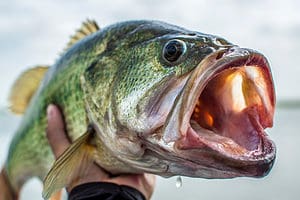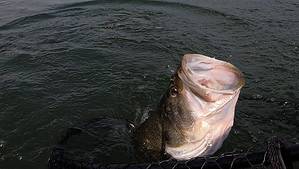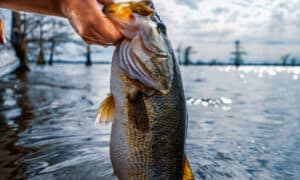Let’s talk about bass sizes! Bass are among the most popular targets for anglers, but many don’t realize just how many different bass species exist. There are hundreds of different types of bass. The fish belong to the order Perciformes, which means “perch-like” fish. The word “bass” is derived from the Middle English word “bars,” meaning “perch.” Some of the most popular bass species among anglers are the black basses. These fish are not true basses, though. Instead, they belong to the sunfish family Centrarchidae. Then, there are the temperate basses, also known as the true basses. There are also sea basses.
While we can’t cover the hundreds of different basses, we can examine some of the more common species that anglers will encounter. Here’s a look at 16 different bass species, including black, temperate, and sea basses. We’ve ranked them by size, so anglers can know what to expect when they set the hook.
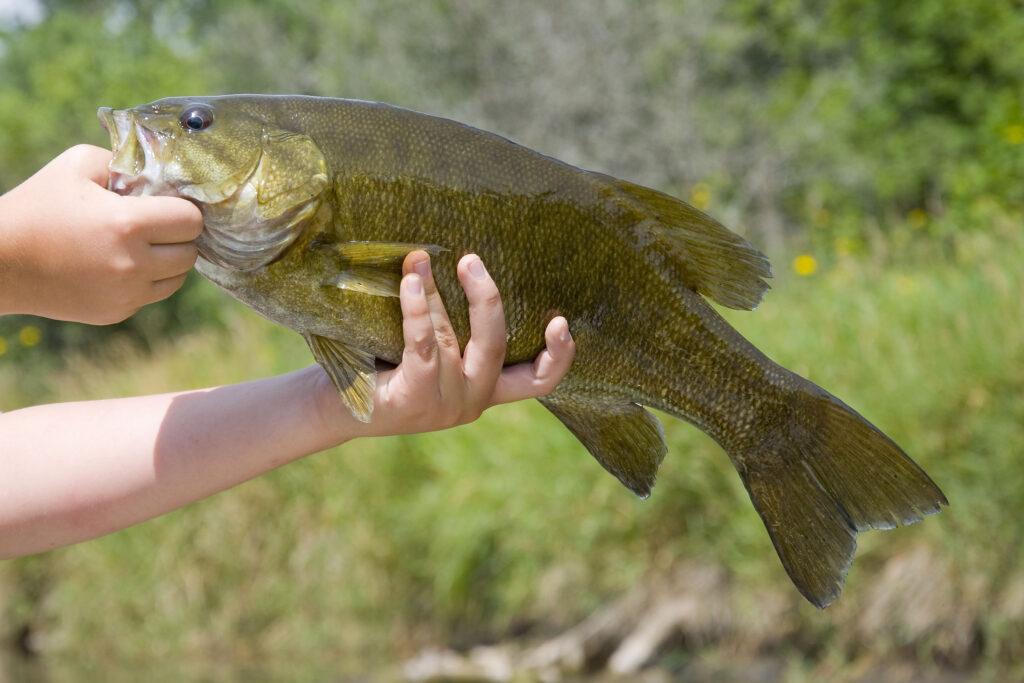
Many bass species, such as the smallmouth bass, are favorites among anglers.
©Steve Oehlenschlager/Shutterstock.com
Black Basses
| Common Name | Scientific Name | Average Weight | World Record Weight | Native Range |
|---|---|---|---|---|
| Largemouth Bass | Micropterus salmoides | 1-5 pounds | 22 pounds, 4 ounces | Eastern and central United States, southeastern Canada and northern Mexico |
| Smallmouth Bass | Micropterus dolomieu | 1-4 pounds | 11 pounds, 15 ounces | Upper and middle Mississippi River basin, the Saint Lawrence River–Great Lakes system, and the Hudson Bay basin. |
| Shoal Bass | Micropterus cataractae | 1-4 pounds | 8 pounds, 12 ounces | Florida, Alabama, and Georgia |
| Spotted Bass | Micropterus punctulatus | 1-3 pounds | 11 pounds, 4 ounces | Mississippi River basin from southern Ohio and West Virginia to southeastern Kansas, and south to the Gulf of Mexico; Gulf Slope drainages from the Chattahoochee River, Georgia to the Guadalupe River, Texas. |
| Alabama Bass | Micropterus henshalli | 1-2 pounds | 11 pounds, 4 ounces | Mobile Bay basin in Mississippi, Alabama, and Georgia |
| Suwannee Bass | Micropterus notius | 1-2 pounds | 3 pounds, 14 ounces | Lower Suwannee and Ochlockonee River systems in Florida and Georgia |
| Guadalupe Bass | Micropterus treculii | 0.5-1 pound | 3 pounds, 11 ounces | Texas |
| Redeye Bass (also known as Coosa bass) | Micropterus coosae | <1 pound | 5 pounds, 2.5 ounces | Georgia, Alabama, and Florida |
Black Bass Notes
Largemouth bass are the largest of the black basses and are also the most popular freshwater game fish in the world. There are two subspecies of largemouth bass: the northern largemouth bass (Micropterus salmoides salmoides) and the Florida largemouth bass (M. salmoides floridanus). Both average about the same size, but under the right conditions, the Florida largemouth has the potential to grow significantly larger than the northern largemouth.
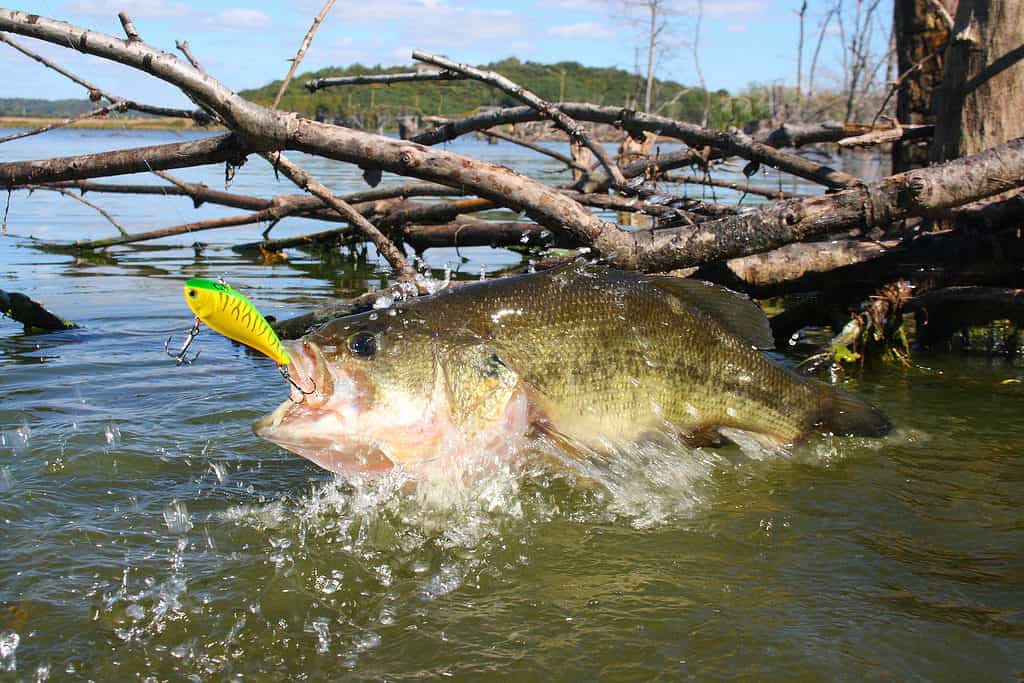
The largemouth bass is the most sought-after fish by freshwater anglers.
©iStock.com/stammphoto
Invasive Largemouths
While anglers dearly love largemouth bass, they have also become a destructive invasive species in some parts of the world. These fish are now found in every U.S. state except Alaska. In some places, such as Lake Tahoe, the bass are invasive and harmful to the natural fish population. Largemouth bass have also been transported to Central and South America, Europe, a number of African nations, and Asian nations such as China and Japan. The fish is an especially big problem in Japan. Efforts are ongoing to eradicate the largemouth bass because of the damage being done to native Japanese fish. Ironically, a fish caught in a lake northeast of Kyoto, Japan, tied the world largemouth bass record. While largemouth bass are invasive and destructive in Japan, they are also thriving.
Scientists recently discovered a new black bass species. The Choctaw bass (Micropterus haiaka) was not found until 2013. This bass is native to the Florida Panhandle and southern Alabama.
The rock bass is not technically a black bass, but it is also a member of the sunfish family. An average rock bass weighs about one pound. The world record is three pounds. The rock bass’ native range runs from Quebec in the north to Florida in the south.

A largemouth bass weighing over 22 pounds was caught in Japan’s Lake Biwa, tying the world record.
©beeboys/Shutterstock.com
State Fish
The largemouth bass is the state fish of Georgia and Mississippi, and the state freshwater fish of Alabama and Florida. The spotted bass is the state fish of Kentucky. The smallmouth bass is the state sportfish of Tennessee. The Guadalupe bass is the state freshwater fish of Texas.
Temperate (True) Basses
| Common Name | Scientific Name | Average Weight | World Record Weight | Native Range |
|---|---|---|---|---|
| Striped Bass (also known as Stripers) | Morone saxatilis | 10-30 pounds | 81 pounds, 14 ounces | St. Lawrence River in Canada to St. John’s River in Florida, and in the Gulf of Mexico from Florida to Louisiana |
| White Bass (also known as Sand Bass) | Morone chrysops | 1 pound | 6 pounds, 13 ounces | St. Lawrence-Great Lakes, Hudson Bay (Red River), and Mississippi River basins from Quebec to Manitoba and south to Louisiana |
| White Perch (also known as Narrow-Mouthed Bass) | Morone americana | 1 pound | 3 pounds, 8 ounces | Coastal United States from Maine to South Carolina |
| Yellow Bass | Morone mississippiensis | >1 pound | 2 pounds, 9 ounces | Lake Michigan and Mississippi River basins from Wisconsin and Minnesota south to the Gulf of Mexico; east to western Indiana and eastern Tennessee, and west to western Iowa and eastern Oklahoma |
Temperate Bass Notes
While striped bass live most of their lives in the ocean, they have also been stocked in landlocked freshwater lakes. These landlocked fish don’t grow quite as large as those who have ocean access, but they can still reach prodigious sizes. The world record for a landlocked striper is 69 pounds, 9 ounces.
Striped bass and white bass can hybridize. Though it does occur naturally on occasion, the hybrid fish are often produced and stocked by fishery management agencies. Hybrid striped bass are sometimes known as wipers, combining white and striped bass names. These fish typically grow from two to five pounds. A trophy hybrid striped bass is generally considered to be over ten pounds.
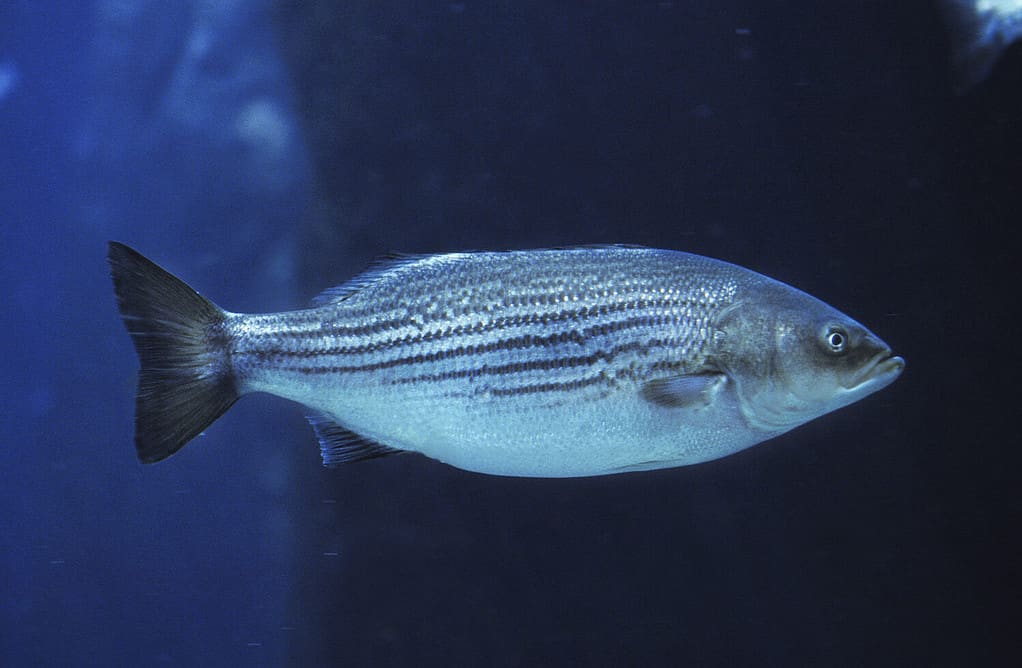
Striped bass can live in both saltwater and freshwater environments.
©slowmotiongli/Shutterstock.com
State Fish
The white bass is the state fish of Oklahoma. The striped bass is the state fish of Maryland, Rhode Island, and South Carolina. It is also the state saltwater (marine) fish of New Hampshire, New Jersey, New York, and Virginia.
Sea Bass
| Common Name | Scientific Name | Average Weight | World Record Weight | Native Range |
|---|---|---|---|---|
| Giant Sea Bass | Stereolepis gigas | 50-200 pounds | 563 pounds, 8 ounces | From Humboldt Bay to the tip of Baja California. Also found in Japan. |
| White Sea Bass (also known as White Weakfish) | Atractoscion nobilis | 20 pounds | 88 pounds | North American Pacific coast, from Alaska to northern Mexico |
| European Bass (also known as European Sea Bass) | Dicentrarchus labrax | 5-6 pounds | 22 pounds, 6 ounces | Western and southern Europe, northern Africa |
| Black Sea Bass | Centropristis striata | 1-4 pounds | 10 pounds, 4 ounces | Atlantic Ocean from Nova Scotia south along the eastern coast of North America as far as the Florida Keys and into the Gulf of Mexico |
Sea Bass Notes
Sea bass classification is difficult. These fish, along with others, carry the “bass” name, but they can be very different from one another. For example, the giant sea bass is actually a wreckfish. It is a member of the family Polyprionidae, not the sea bass family Serranidae. It is also the biggest fish in the world to carry the “bass” name. Sadly, the giant sea bass is listed as a critically endangered species by the International Union for Conservation of Nature.
The black sea bass is considered one of the best-tasting fish in all of the world’s oceans.
The white sea bass is the largest of a group of fish known as croakers. These fish are so named because of the croaking noise they make by hitting the abdominal muscle against the swim bladder.
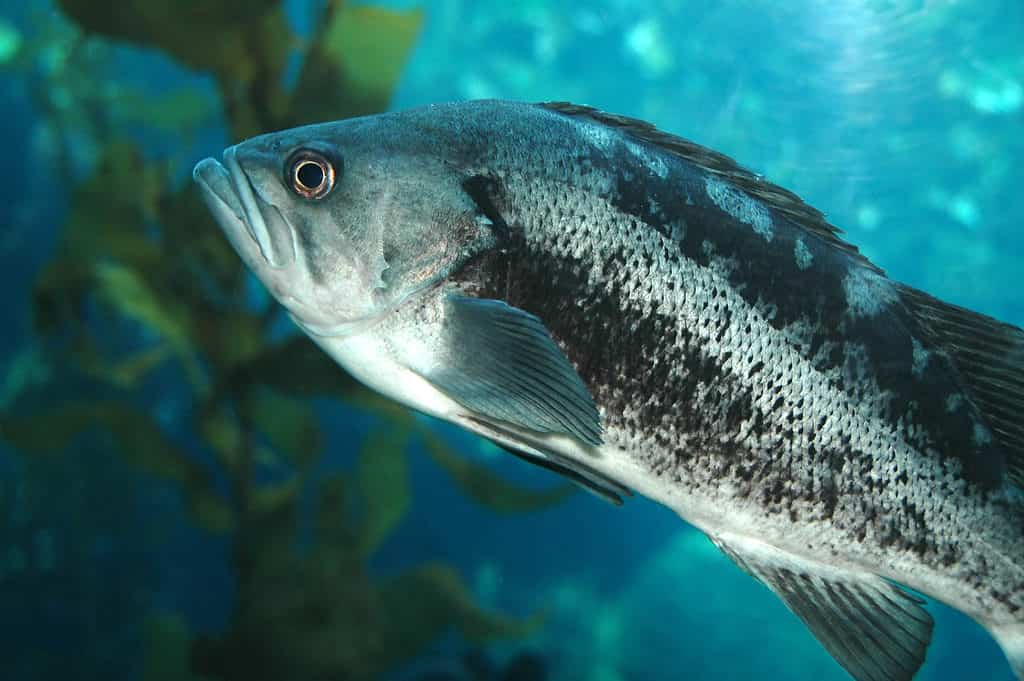
Black sea bass do not grow nearly as large as other sea basses, but they are highly valued as table fare.
©Mike Brake/Shutterstock.com
Summary of 16 Types of Bass
| Rank | Bass | Average Weight | Type of Bass |
|---|---|---|---|
| 1 | Giant Sea Bass | 50-200 lbs | Sea Bass |
| 2 | Striped Bass | 10-30 lbs | Temperate Bass |
| 3 | White Sea Bass | 20 lbs | Sea Bass |
| 4 | European Bass | 5-6 lbs | Sea Bass |
| 5 | Largemouth Bass | 1-5 lbs | Black Bass |
| 6 | Smallmouth Bass | 1-4 lbs | Black Bass |
| 7 | Shoal Bass | 1-4 lbs | Black Bass |
| 8 | Black Sea Bass | 1-4 lbs | Sea Bass |
| 9 | Spotted Bass | 1-3 lbs | Black Bass |
| 10 | Alabama Bass | 1-2 lbs | Black Bass |
| 11 | Suwannee Bass | 1-2 lbs | Black Bass |
| 12 | White Bass | 1 lb | Temperate Bass |
| 13 | White Perch | 1 lb | Temperate Bass |
| 14 | Guadalupe Bass | 0.5-1 lb | Black Bass |
| 15 | Redeye Bass | Less than 1 lb | Black Bass |
| 16 | Yellow Bass | Less than 1 lb | Temperate Bass |
The photo featured at the top of this post is © iStock.com/stammphoto
Thank you for reading! Have some feedback for us? Contact the AZ Animals editorial team.




